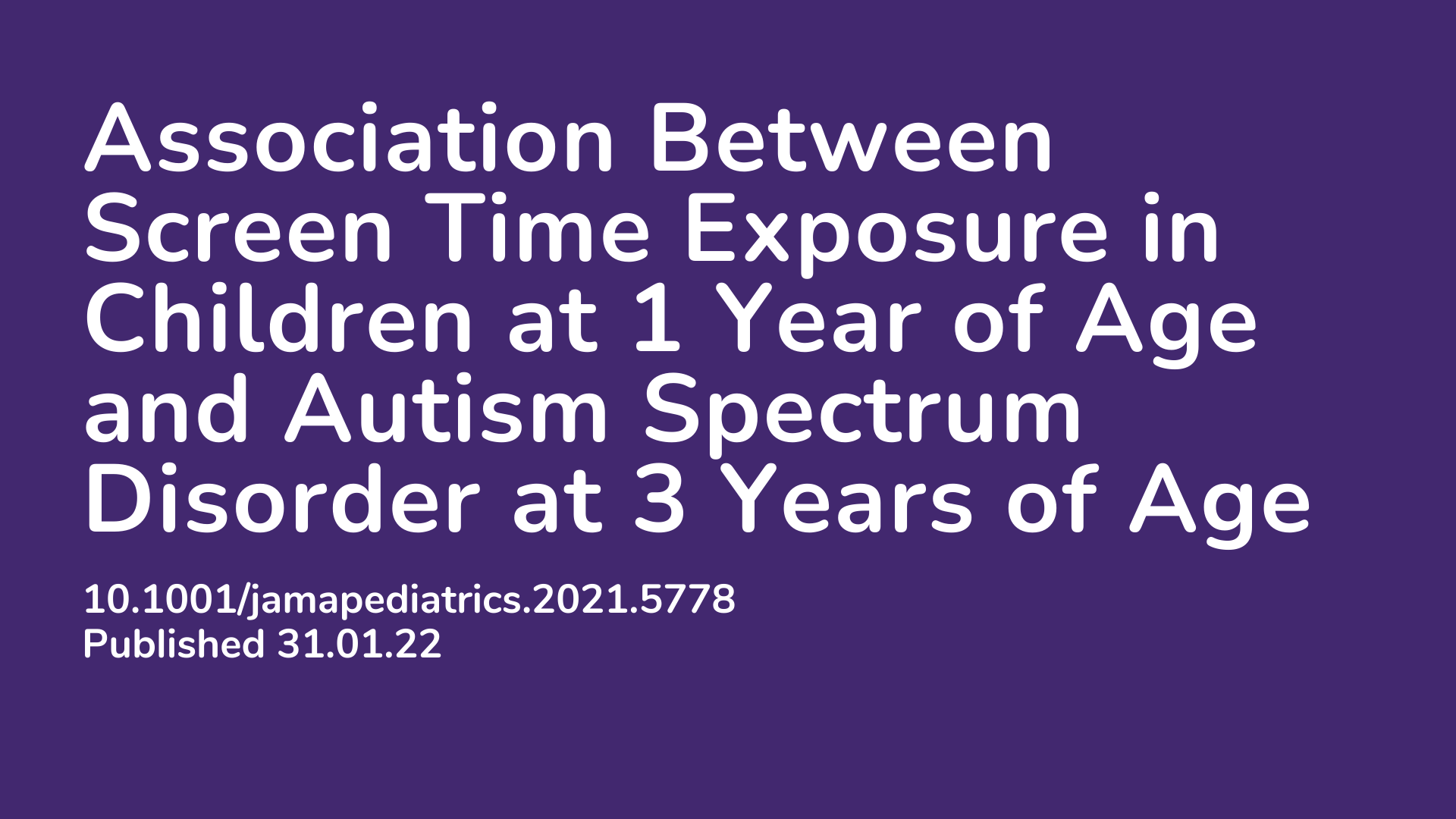Summary: Previous studies have suggested that the postnatal environment for a child up to the age of 12 months is critical in regards to Autism Spectrum Disorder (ASD) characteristics. This study looked at the association between screen time and ASD, and found that there is a statistically significant association between screen time in males at 1 year of age and ASD at 3 years of age. This was found to be irrespective of any predispositions or potential maternal maltreatment factors that may be associated with to ASD. Whilst the correlation is not yet precisely understood, electromagnetic fields have been noted in this paper as an environmental factor associated with negative health outcomes, which may be driving the association with screen time and ASD. Despite recommendations from global leaders in pediatric and public health, 90% of the infants in this paper still reported to use screens at the age of 1.
Abstract:
Importance: It is unclear to what extent the duration of screen time in infancy is associated with the subsequent diagnosis of autism spectrum disorder.
Objective: To examine the association between screen time in infancy and the development of autism spectrum disorder at 3 years of age.
Design, Setting, and Participants: This cohort study analyzed data from mother-child dyads in a large birth cohort in Japan. This study included children born to women recruited between January 2011 and March 2014, and data were analyzed in December 2020. The study was conducted by the Japan Environment and Children’s Study Group in collaboration with 15 regional centers across Japan. Exposures Screen time at 1 year of age.
Main Outcomes and Measures: The outcome variable, children diagnosed with autism spectrum disorder at 3 years of age, was assessed using a questionnaire administered to mothers of the participating children.
Results: A total of 84 030 mother-child dyads were analyzed. The prevalence of children with autism spectrum disorder at 3 years of age was 392 per 100 000 (0.4%), and boys were 3 times more likely to have been diagnosed with autism spectrum disorder than were girls. Logistic regression analysis showed that among boys, when “no screen” was the reference, the adjusted odds ratios were as follows: less than 1 hour, odds ratio, 1.38 (95 % CI, 0.71-2.69; P = .35), 1 hour to less than 2 hours, odds ratio, 2.16 (95 % CI, 1.13-4.14; P = .02), 2 hours to less than 4 hours, odds ratio, 3.48 (95% CI, 1.83-6.65; P < .001), and more than 4 hours, odds ratio, 3.02 (95% CI, 1.44-6.34; P = .04). Among girls, however, there was no association between autism spectrum disorder and screen time. Conclusions and
Relevance: Among boys, longer screen time at 1 year of age was significantly associated with autism spectrum disorder at 3 years of age. With the rapid increase in device usage, it is necessary to review the health effects of screen time on infants and to control excessive screen time.
Article Publication Date: 31.01.22
DOI: 10.1001/jamapediatrics.2021.5778



